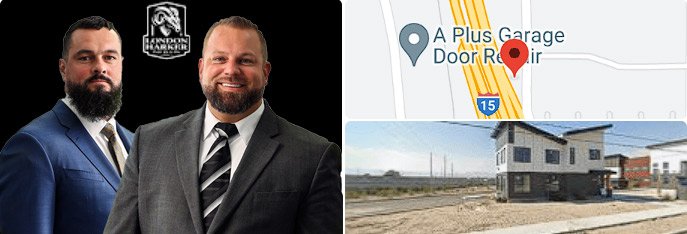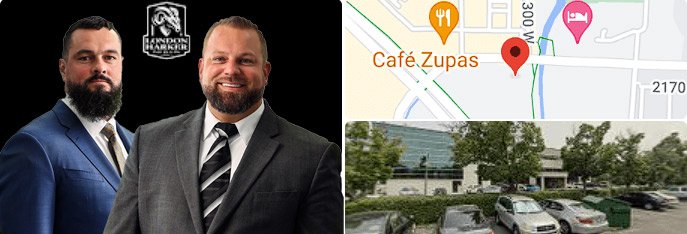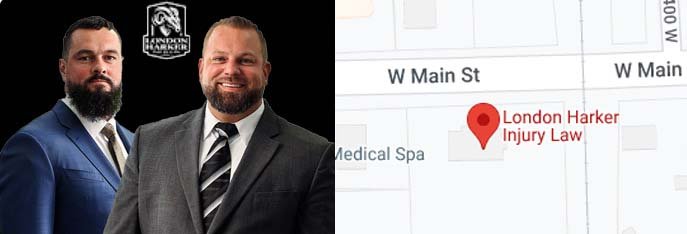Navigating the aftermath of a car accident in Utah can be overwhelming, especially when it comes to determining who’s at fault and what that means for your compensation. Utah follows a modified comparative fault system, which allows you to recover damages even if you’re partially at fault—so long as you’re less than 50% responsible.
In this guide, we’ll break down how this legal standard works, how it affects personal injury claims, and what steps you can take to protect your rights.
What is Comparative Negligence?
Comparative negligence is a legal principle that distributes fault among all parties involved in an accident. Rather than assigning 100% of the blame to one side, this system considers each person’s actions and assigns a percentage of fault accordingly.
For example, if you are awarded $100,000 in damages but are found to be 30% at fault, your recovery would be reduced by 30%, leaving you with $70,000.
How Liability Is Determined
Fault is determined by analyzing:
Driver behavior – Speeding, distracted driving, or failure to yield
Traffic law compliance – Running red lights or ignoring signs
Environmental conditions – Weather, road hazards, visibility
Evidence – Police reports, witness statements, photos, and video footage
Courts and insurance companies use these details to assess the share of responsibility for each party involved.
How Utah’s Modified Comparative Fault System Works: The 50% Rule
Utah applies a modified comparative fault rule with a strict 50% threshold:
You can only recover compensation if you are less than 50% at fault.
If you are 50% or more at fault, you are barred from recovering damages.
If you are less than 50% at fault, your compensation is reduced proportionally.
Example:
If you are found 20% at fault and your damages are $100,000, you would receive $80,000. But if you’re 50% or more at fault, you receive nothing.
This system is designed to encourage fairness and discourage lawsuits where the claimant is primarily responsible for the incident.
How Modified Comparative Fault Affects Your Personal Injury Claim
1. Compensation Is Reduced
Your settlement or court award will be directly reduced by your percentage of fault.
2. The Burden of Proof Is Critical
You or your attorney must demonstrate that the other party’s actions were more negligent than yours.
3. Insurance Companies Use It to Their Advantage
Insurers often look for ways to increase your share of fault to reduce or deny payouts. They may:
This is why it’s essential to avoid admitting fault and to seek legal representation early.
Proving the Other Party’s Liability Under Utah Law
To receive compensation, you must prove the other driver was negligent, which under Utah law involves establishing:
Duty of care – The driver had a legal responsibility to operate safely
Breach of duty – They acted recklessly or broke traffic laws
Causation – Their actions directly caused the accident
Damages – You suffered injuries or losses as a result
Learn more about your rights and legal options on our Utah car accident lawyer page.
Building a Strong Case: The Role of Evidence and Experts
Key Evidence Includes:
Expert Testimony May Include:
Accident reconstruction specialists – Recreate crash scenarios
Medical experts – Connect your injuries to the accident
Mechanical experts – Identify vehicle failures or defects
Having comprehensive evidence strengthens your case and counters attempts to unfairly assign fault.
Real Examples of Comparative Fault in Utah
1. Rear-End Collision with Shared Fault
If your brake lights were out and you were rear-ended, the court may find you 20% at fault for poor vehicle maintenance, reducing your recovery accordingly.
2. Left-Turn Accident
If a left-turning driver is hit by an oncoming vehicle that was speeding, both parties may share fault. If the turning driver is 60% at fault, they would receive no compensation.
3. Multi-Vehicle Pileup
In chain-reaction crashes, fault is distributed. One driver may be 40% responsible, another 30%, and another 30%. Each would have their compensation reduced based on their share of fault.
How to Protect Your Right to Full Compensation
Given how aggressively insurers apply comparative fault, here are steps you should take:
Document the scene thoroughly – Photos, videos, and witness contacts
Seek medical attention immediately – Even for minor injuries
Avoid making statements to insurers – Don’t admit fault
Consult a car accident attorney in Utah – A lawyer can defend your rights and negotiate your settlement
At
London Harker, our experienced personal injury attorneys will work to ensure you aren’t unfairly blamed and that you receive the compensation you rightfully deserve.
Conclusion
Understanding Utah’s modified comparative fault law is essential when navigating a car accident claim. Even if you share some responsibility, you may still be entitled to compensation—but only if you act quickly, gather strong evidence, and protect your legal rights.
If you’ve been injured in a Utah car accident, contact us today for a free consultation. Our team at London Harker is here to help you understand your options and fight for the compensation you deserve.



